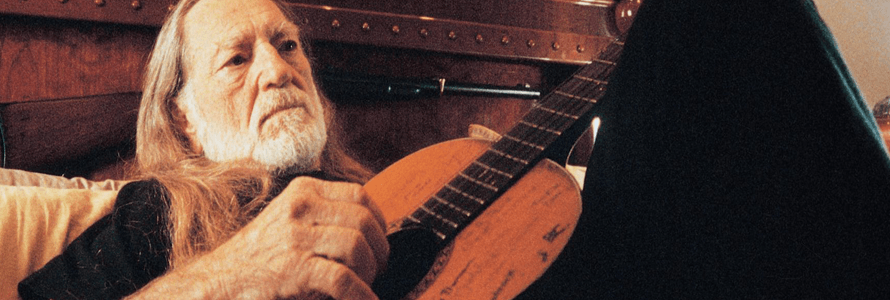The rise of the country guitar in the United States can be traced back to the ascent of the US itself. Some of the early settlers brought guitars from their homeland, introducing the six-string sound to the new world. It wasn’t straight away that guitar music, or the country genre in general, started emerging. The guitars were mostly unavailable and hard to find from the regular traders, turning them into somewhat of an exclusive possession back in the early days.
The earliest traces of country music can be noted as back as in the early 1900’s, during the time when musicians like Sam McGee started pickup up guitar basics and trick from the local workers on the railroad track. Interestingly enough, most of such workers were black, proving the importance of black people when the foundations of modern culture and music are considered. As the early decades passed, the guitar became more available, and therefore started spreading across the continent relatively fast.
Early Years of Country Guitar
During the early 1920’s, the so-called first generation of country music had finally emerged on the world’s music scene. Mostly focused around the city of Atlanta, Georgia, the era epitomized the state of the working class in the US at the time, easily finding its way among the vast number of listeners. The very first commercial country music recordings dropped in 1923 titled Arkansas Traveler” and “Turkey in the Straw.” The electric guitar was always present since the late 1920’s, with some of the decade’s most prominent axemen including the likes of Roy Harvey and Riley Puckett.
The early era’s biggest icon was without doubt the legendary Jimmie Rogers (1897 – 1933). The late great singer/guitarist is usually dubbed the father of country music, earning such title with classic country music numbers as “Blue Yodel No. 1 (T for Texas),” “In the Jailhouse Now,” “Mississippi Delta Blues” or “Frankie and Johnnie.”
Second Generation of Country Music
With the Great Depression looming in the 1930’s, the country music sales were severely down, putting radio broadcasts at the helm of music promotion and mass spreading. The electric guitar started taking full swing in the country genre, as Gibson officially introduced its ES-150 six-string model in 1936. Although most country musicians weren’t opting to go electric in the first place, the Western swing acts in the Southwest region had no issues in making the switch. Some of the early Western axemen include Eldon Shamblin and Muryel “Zeke” Campbell of the Light Crust Doughboys.
As the genre was essentially still in its early phase, the techniques used by the prominent guitarists used to vary, often being based on freestyle and picking things up along the way. There was the globally-renowned “drop thumb” style Maybelle Carter kicked off, with her tune “Wildwood Flower” proving itself as the perfect example of technique demonstration. There were also notable implementations of jazz style from such guitarists as the California-based Porky Freeman and his massive regional hit “Boogie Woogie on the Strings.”
The period also marked the introduction of various country music subgenres such as bluegrass, honky tonk and hillbilly boogie, as numerous other artists began emerging on the emerging scene.
Third Generation of Country Music
We are talking about the time when rockabilly, country soul and country rock made their first appearances. The impact rock ‘n’ roll music made was a global one, so it comes as pretty much no surprise that the country genre was also influenced to a solid extent.
The third era specifically marked the ‘50s and the ‘60s, a time when Fender company introduced their Telecaster solid body guitar model, which became massively used among the country guitarists. Some of the prominent six-string players of the decade included the fast-picking Jimmy Bryant and Joe Maphis. Of course, we simply can’t miss the iconic Chet Atkins, the proud member of both Rock & Roll Hall of Fame and the Country Music Hall of Fame, the winner of 14 Grammy Awards known for such hit numbers as the “Yakety Axe” or 1954’s “Mr. Sandman,” considered by some critics as the very first riff-based track ever recorded.
Fourth generation of Country Music
The 1970s/1980s era of country music once again saw the rise of several subgenres most notably country pop and the so-called outlaw country. Outlaw country group called Cherokee Cowboys had the iconic country singer Willie Nelson among its ranks, while the entire genre was generally epitomized with the Fender Telecaster guitar mentioned beforehand.
Some of the notable Telecaster wielders included Waylon Jennings Albert Lee of the Emmylou Harris’ Hot Band. As the ‘80s arrived, the style of Pete Anderson, John Jorgenson and Jerry Donohue proved as the most prominent and influential ones. The time was good for country music in terms of commercial success as well, with artists such as Dolly Parton, Eddie Rabbitt and Willie Nelson doing very well on the charts, releasing a fair share of chart-topping country music singles.
Fifth and Sixth Generation of Country Music
With the additional technology advancements the decade brought, country music started spreading worldwide at very fast pace through the work of such country stars as Garth Brooks who managed to reach an astonishing figure of over 128 million units. Notable mentions also include Billy Ray Cyrus, Shania Twain, Carrie Underwood and Taylor Swift.
Guitar is expectedly still a crucial part of country music, with even some of the rock giants such as Bon Jovi clearly implementing the country influences in some of their latest hits. Same goes vice versa, as numerous country musicians have given their music a fair dose of rock vibe sever since the late ‘50s and early ‘60s. The United States still remain the genre’s major base, and most probably always will, but country music had also undoubtedly spread across the other parts of the globe as well. The influence of country guitar can be seen and heard around the world in various genres and cultures, proving the ultimate impact and longevity of the renowned country axe.












Add comment